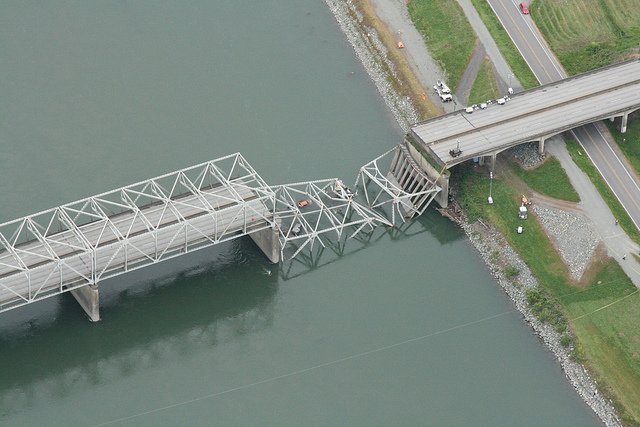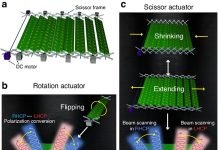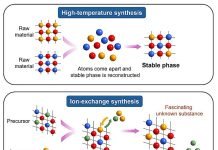
On May 23, 2013, a truck-tractor with a flatbed semitrailer hauling an oversized container was traveling south on Interstate 5 (I-5) near Mount Vernon, Washington.
When it crossed the Skagit River Bridge, the oversized container stuck parts of the bridge and caused a 49-m section of the bridge to collapse into the river.
The truck-tractor had a permit authorizing the travel route and was being escorted by a pilot vehicle when the collapse occurred.
A group of civil engineers from UIUC has been trying to figure out the reasons for collapse since then. Now they point out that several factors, including regulatory mistake, structural impact, and human error led to the collapse.
First, the oversized container got a permit for a bridge with lower clearance than its height. Researchers suggest that this was due to inaccurate record-keeping.
The Washington Department of Transportation only kept the maximum clearance in its bridge database. For bridges with a square opening, that was not a problem. However, the opening of the I-5 Skagit River Bridge was curved, which means the clearance over the far lances was lower than the center lances.
Second, when the collapse occurred, a pilot vehicle was escorting the oversized container. But there was miscommunication between the truck driver and the pilot car driver. The pilot car did not tell the truck driver that the clearance was too low and that the truck should adjust course.
Researchers suggest that there should be a sensor at the top of the pole to automatically contact the driver if the truck hits the bridge. In that case, drivers do not have to communicate quickly.
The third reason is a structural one. The initial damage where the truck hit was a cross beam. The damage cascaded and caused the entire collapse. Future construction should reinforce bridges with such a design.
Researchers suggest that it is important to learn from failure. They hope their analysis can help prevent this type of accident happening again and build a safer and more reliable infrastructure in the future.
Copyright © 2018 Knowridge Science Report. All rights reserved.




